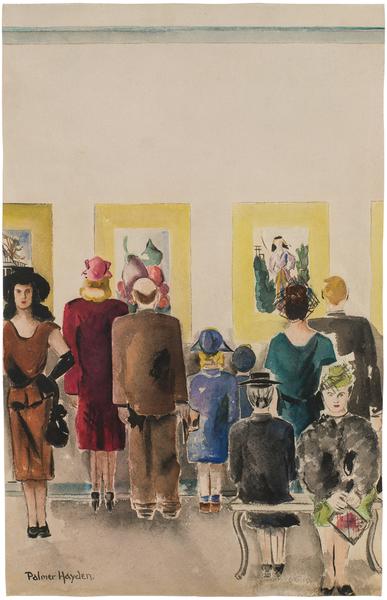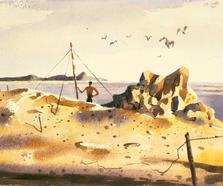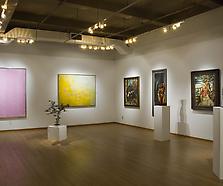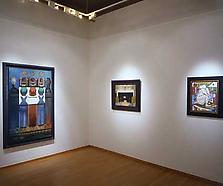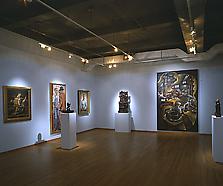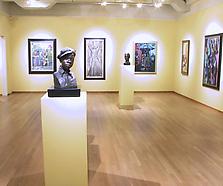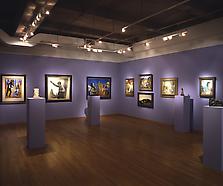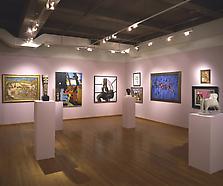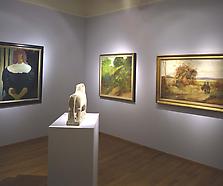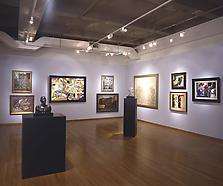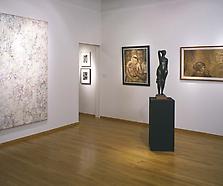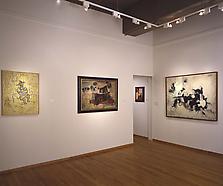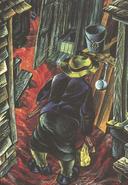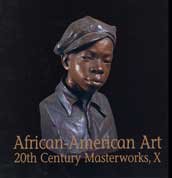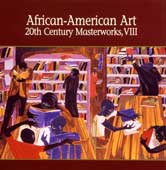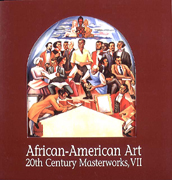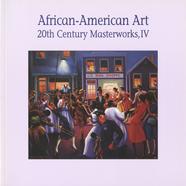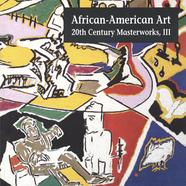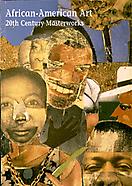Born Peyton Cole Hedgeman in Widewater, Virginia, Palmer Hayden moved to Washington, D.C. when he was just a teenager. He worked odd jobs before joining the Ringling Brothers Circus, where he often drew portraits of performers for publicity purposes. Hayden moved about the country until he enlisted in the United States Army in 1912. In 1920, he was discharged and moved to New York City in the hopes of becoming a commercial artist. Once in New York, Hayden studied at Columbia University (1920) and took occasional art lessons with Victor Perard, a professor at the Cooper Union School of Art (1925). During the summers of 1926 and 1927, he traveled to Maine to study at the Commonwealth Art Colony in Boothbay, where he worked in exchange for tuition. In 1926, Hayden won the first Harmon Foundation gold medal award for Distinguished Achievement in the Visual Arts for his painting of a Maine water scene. He used the prize money to travel to France, where he had a one-man show at the Galerie Bernheim-Jeune (1927) and was included in the Salon des Tuileries (1930) and the American Legion Exhibition (1931).
Palmer Hayden (1890-1973)
Exhibitions
Prints & Publications
Artist Information
Most of his paintings from this era are post-impressionistic depictions of marine subjects and views of Paris, but his abstracted representations of African Americans were more popular among white Parisian patrons. While abroad, Hayden continued to contribute works to the yearly Harmon Foundation exhibitions, and after returning to New York in 1932, he worked with Mary Beattie Brady at the Harmon Foundation office and was employed as an easel painter for the WPA (1934-1940). Best known for the consciously naïve narrative style he used to represent African American folklore and contemporary scenes of Harlem, Hayden once expressed his hope to “devote [his] life and art to works which immortalize the Negro as a worthy contributor to the building [of this country].” He continued to live and paint in New York until his death in 1973.



